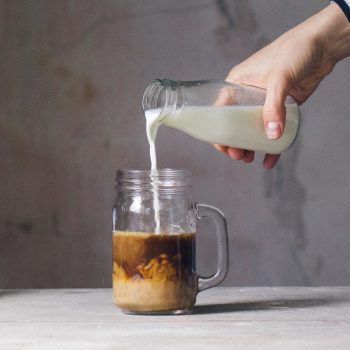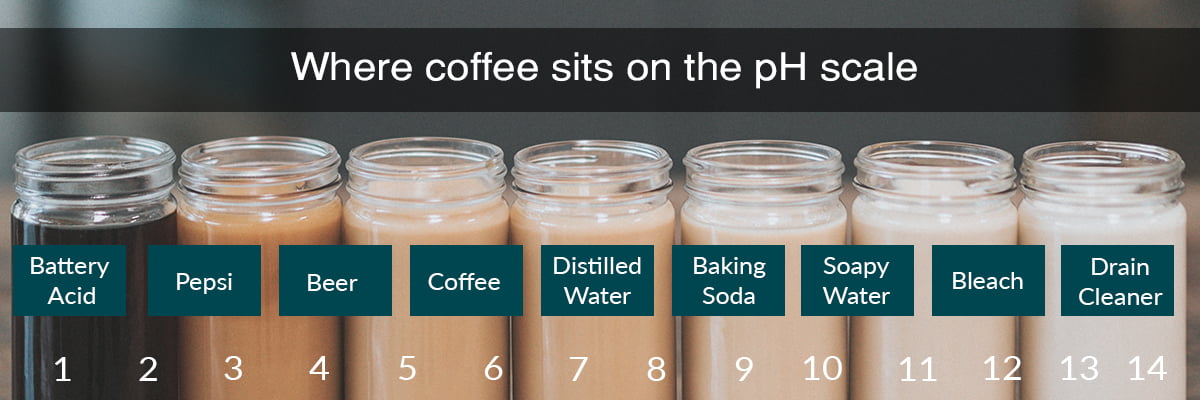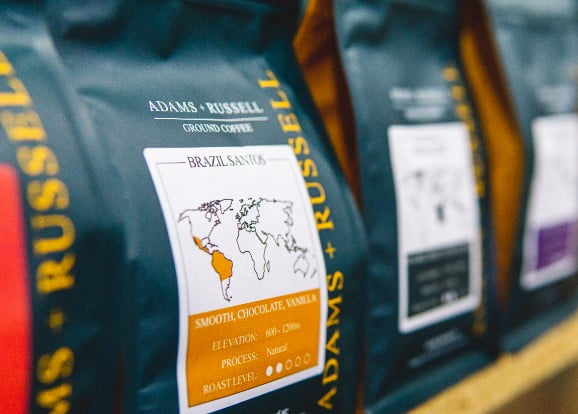
Use this guide to find out everything you need to know about acid in coffee. After discovering what we mean by coffee acidity, find the best products on the market that are full of delicious flavour.
Also read about where acid comes from, its content in decaf, how it directly affects your health and much more.
By the end of this post you will know whether you should be drinking low acid coffee and the best options for you. Navigate through this easy guide…
- What does it mean? Acid vs acidity
- Which coffee has low acidity? The best products you can buy
- Is decaf coffee acidic?
- Where does coffee acidity come from?
- Is coffee acidity good or bad?
- Can I remove the acid from my coffee without altering the taste?
What does it mean? Acid vs acidity
Before we get to coffee, here’s the definition of acid:
‘A substance with particular chemical properties including turning litmus red, neutralizing alkalis, and dissolving some metals; typically, a corrosive or sour-tasting liquid of this kind’, Google tells us.
In simpler terms, it means any substance that has a pH level of less than 7.

Coffee has a pH of around 5, which is actually less than a lot of juices, fizzy drinks and alcoholic drinks.
However, when we are talking about this substance in coffee, we aren’t referring to the pH level.
The presence of certain acids in our favourite drink creates varying flavours, and for a lot of people it is a desirable characteristic.
Keep reading to find out what acids you may be drinking in your coffee and how they affect your body.
But first, here’s a few example products, which you can choose if you really do want to buy low acid coffee.
Which coffee has low acidity? The best products you can buy
There are plenty of low acid options on the market that are still full of flavour and richness. Here are the top picks for a premium quality brew.
Java
Experience rich, earthy flavours of chocolate and earthy spices. These flavours perfectly compliment the luxurious, deep body of this Indonesian single origin. This is a huge favourite amongst customers:
“Exactly as described deep earth notes, low acidity. Very satisfied, definitely will get more.”
“Wow! Even opening the pack is quite an experience, the smell is fabulous. If you’re a lover of powerful dark roast coffees this is the one for you.”
Brazil Santos
This light roast has a delightful vanilla aroma with a smooth flavour and medium body. This is a delicious refreshing coffee that has a hint of velvety chocolate.
“Lovely smooth coffee. I can’t believe the difference it makes versus a supermarket bean. Always buy my coffee beans from Adams and Russell now”
“Fabulous smooth tasty coffee”
Jamaica Blue Mountain
The Jamaica Blue Mountain is a part of our premium range and is a must try for any coffee lover. Experience the floral aroma followed by a clean, delicate and pure cup. This is a medium roast with a light body that is like no other.
To read more about why these beans are so prestigious, take a look at our guide to Jamaican Blue Mountain Coffee.
Dark Roast African Espresso
This is perfect for those who are looking for an intense, rich and dark roast. Experience a delicious aftertaste with intense earthy flavours. This single origin is full of bold and diverse flavours and is not for those who are looking for a subtle taste.
Is decaf coffee acidic?
Although caffeinated coffee may not have a higher concentration than decaffeinated does, decaf coffee beans may be better for those who are sensitive to acid content.
This is because caffeine can cause your stomach to generate more acid. So, for those who struggle with symptoms of GERD (Gastroesophageal reflux disease), decaf may be a healthier option for your body.
Decaf that goes through a mountain water process is best for low acidity as it removes the caffeine thoroughly and safely, without the use of harsh chemicals.
Where does coffee acidity come from?
There are two main groups found in coffee; chlorogenic and quinic.
Chlorogenic acids are antioxidants. Large concentrations are found in green beans, but as you roast the beans the levels diminish. Benefits of this group include weight loss, reduced blood pressure, improved mood and a smaller risk of developing diseases such as diabetes and cancer.
Quinic acids are developed as the beans are being roasted. They are responsible for the flavours in coffee, such as a ‘bright’ or ‘mellow’ acidity.

Is coffee acidity good or bad?
We can split this question into two:
- Is it good for flavour?
- Is it good for health?
Firstly, flavour. It is down to personal preference, but a bold acidity is usually a desirable characteristic for the flavour of your brew. Different substances and concentrations can give flavours such as:
- Citrus
- Sweet
- Fruity
- Sharp
- Wine/grape
- Clean/crisp
Secondly, health. The only issues it may cause are for your stomach. If you have a sensitive stomach or suffer with acid reflux, then it may be a concern for you.
For those with sensitive stomachs, in large quantities it could damage stomach lining or cause you to produce excess acid, which can cause acid reflux.
If you are concerned about this or have symptoms of GERD, then low acid products are the perfect way to continue enjoying coffee.
Can I remove the acid from my coffee without altering the taste?
There are a few ways which some claim will lower the concentration in your cup. Although, they have not been scientifically proven to reduce it.
- Use a coarser grind to avoid over extraction. As there is a small surface area, less acid may be extracted from the grounds.
- Use a cold brew method as this is less likely to bring out the acids compared to using hot water.
- Add milk to your drink as it will help neutralise it.
- Some claim adding egg shells or baking soda to your drink will reduce high concentrations, however we wouldn’t recommend this as it may affect the taste and may not be pleasant.
Low acidity coffee is the best way to avoid high concentrations, as no flavour is sacrificed, and you still get to enjoy high-quality, delicious blends.
How to complement the taste of coffee
Of course coffee is known for its rich, bold flavours and vibrant acidity That’s partly why it pairs exceptionally well with cake. Firstly, the coffee’s acidity complements the sweetness of the cake, creating a harmonious balance of flavours. The coffee’s boldness provides a delightful contrast to the cake’s texture, enhancing the overall sensory experience.
Furthermore, the complex notes in coffee, such as fruity, nutty, or chocolaty undertones, can mirror or complement the cake’s ingredients. Whether it’s a moist chocolate cake, creamy Vanilla cake or a fruity tart, acidic coffee’s versatility enhances the dessert’s flavours, making it a perfect pairing for any cake lover.

